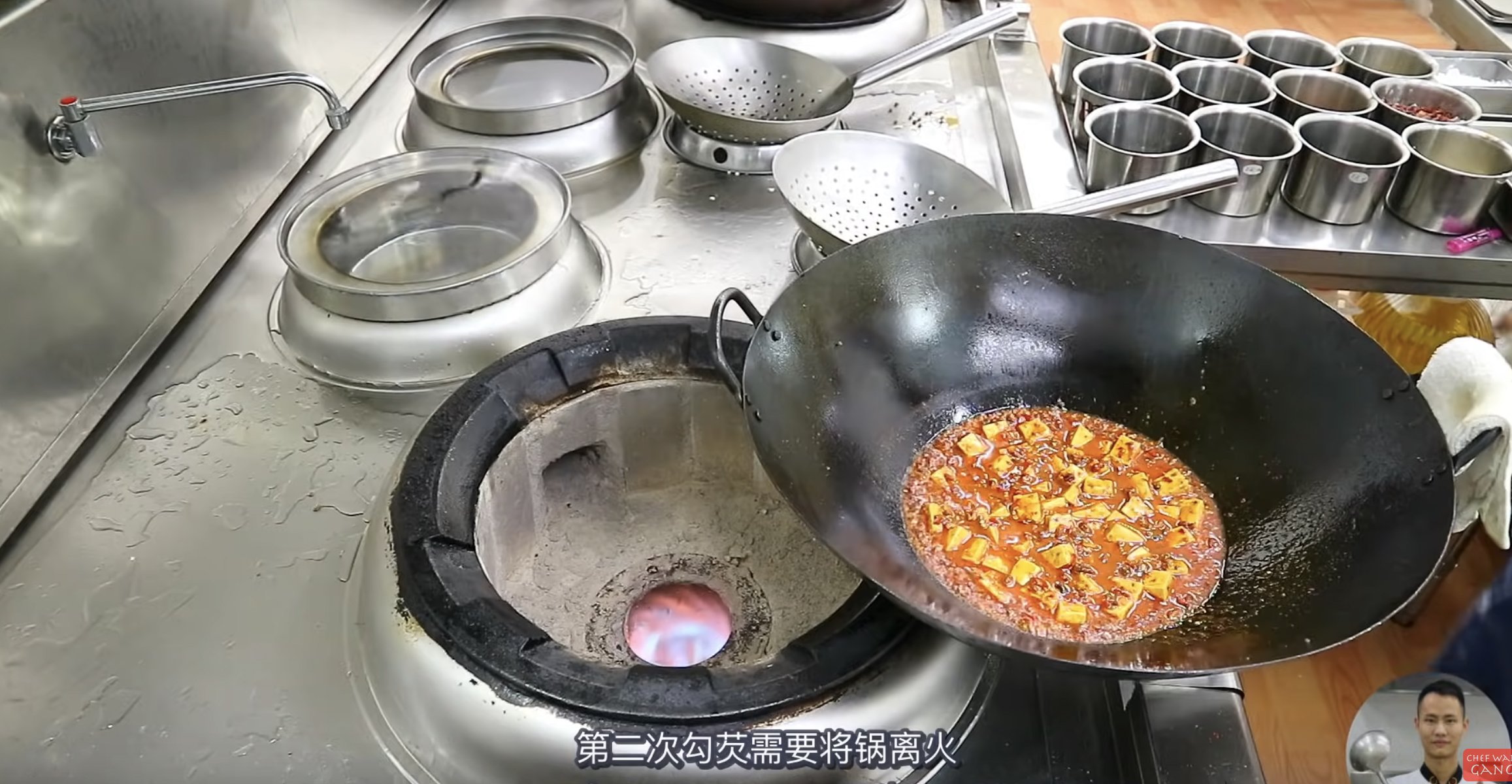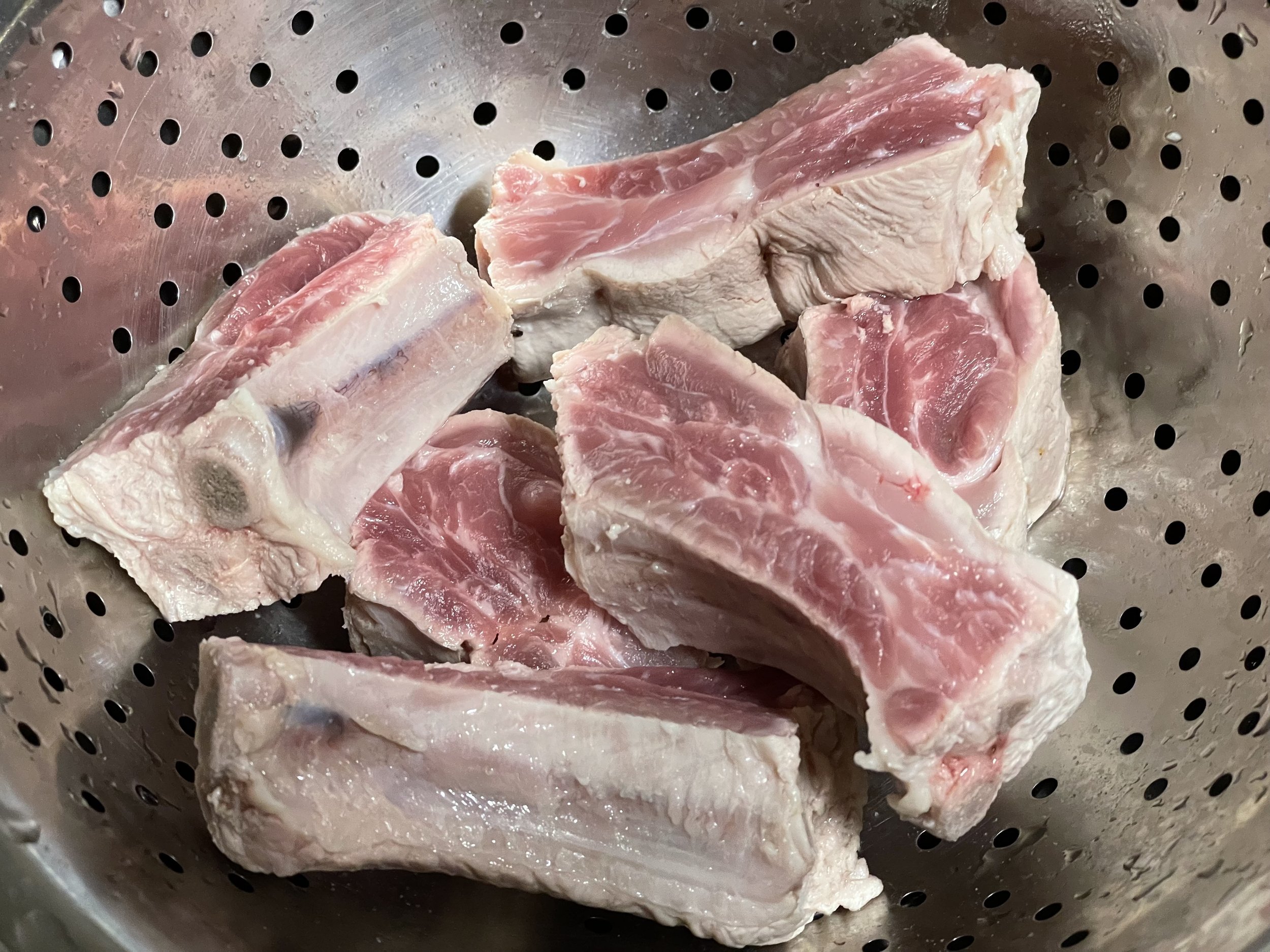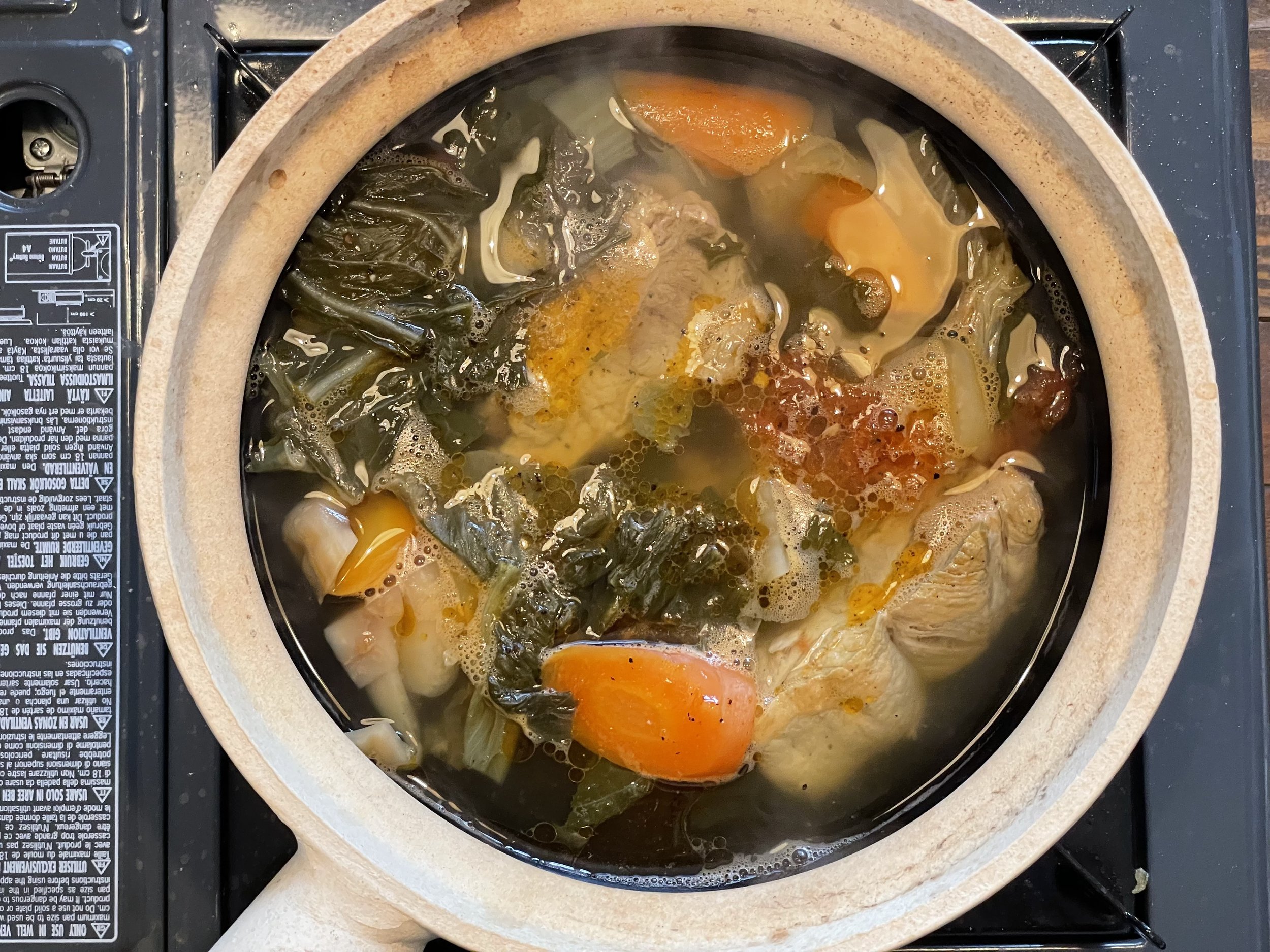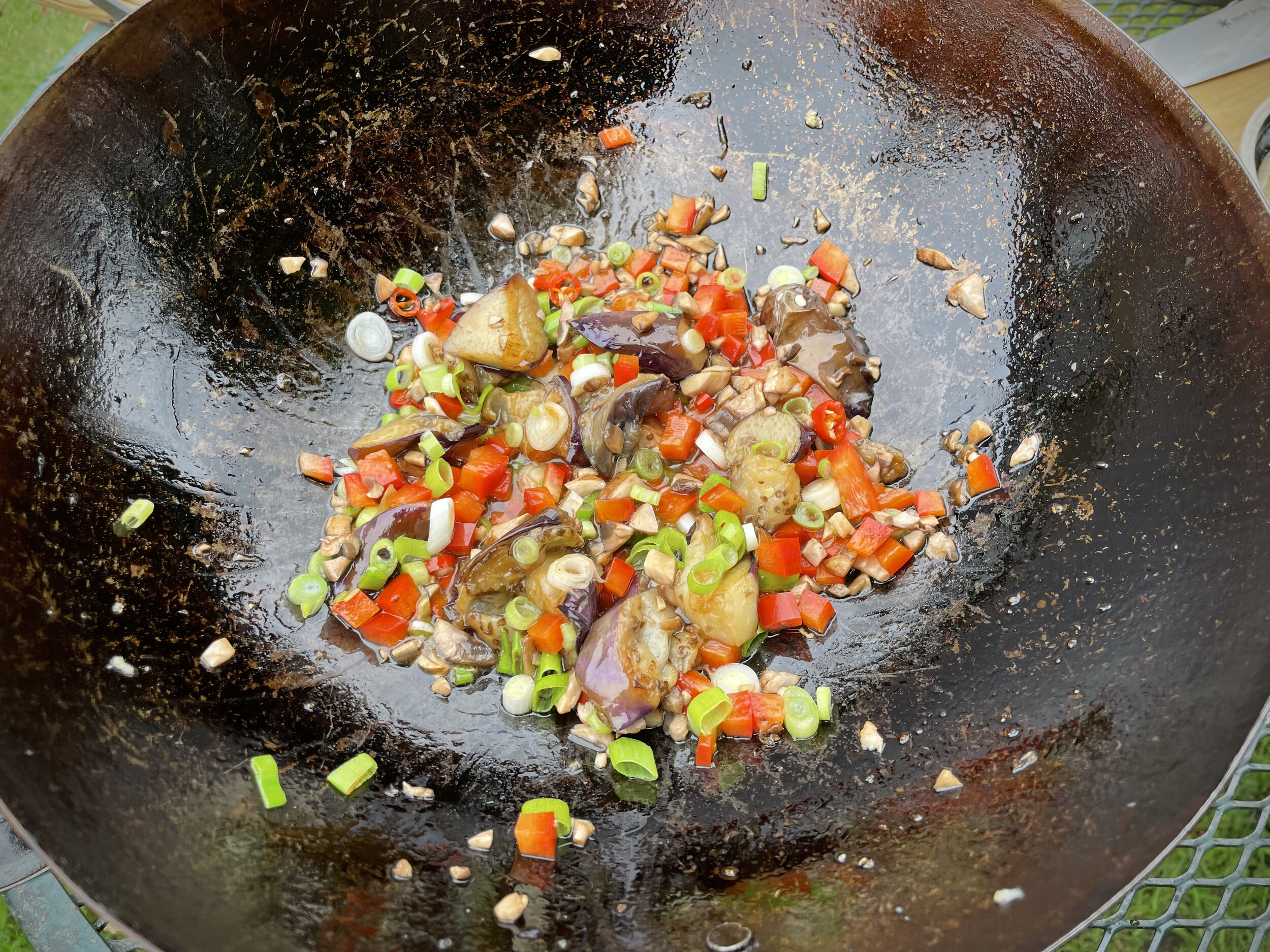Bitter melon soup
I love bitter melon paired with meat. The bitter perfectly balances out with the fatty texture of pork or salt beef. This Cantonese soup is very easy to make. In The Netherlands the easiest pork bones you can buy is in the form of ribs. Cook the pork ribs in the usual way: boil the ribs in water, discard the water and start again with fresh water. When you have bones with a lot of blood, soak the bones in water for a couple of hours.
When the soup is simmering add 1/4 cup dried barley, red dates and sliced ginger. Simmer for an hour or so until the meat almost falls off the bone.
You can slo use candied honey dates. Same fruit (red jujubes) but sweeter. Both are used in medicinal soups.
Add sliced bitter melon, but not too much. For a liter of broth I used 1/4 of bitter melon. Simmer until the vegetable is cooked. Season with salt and MSG.
That’s it!










